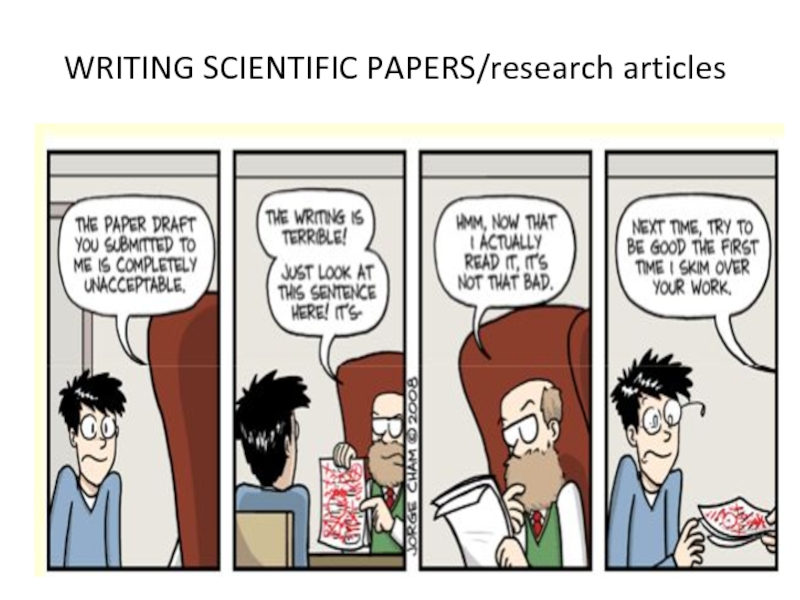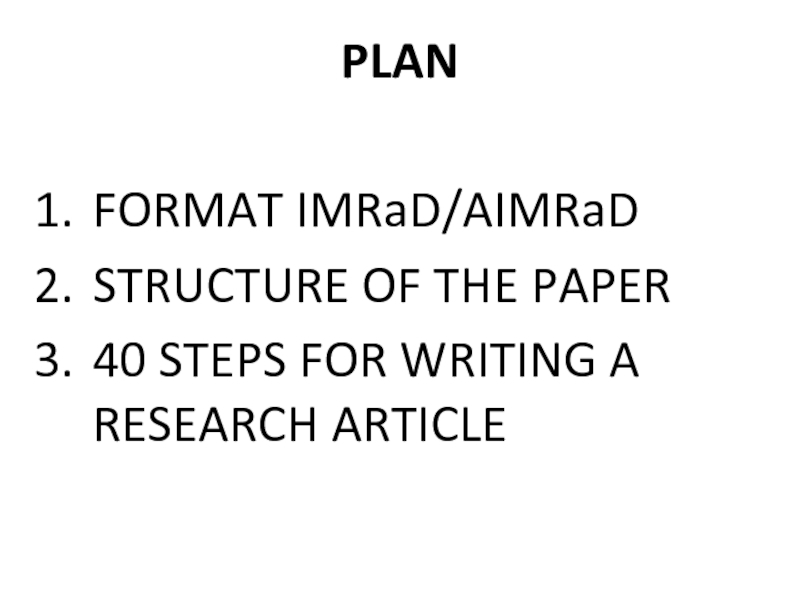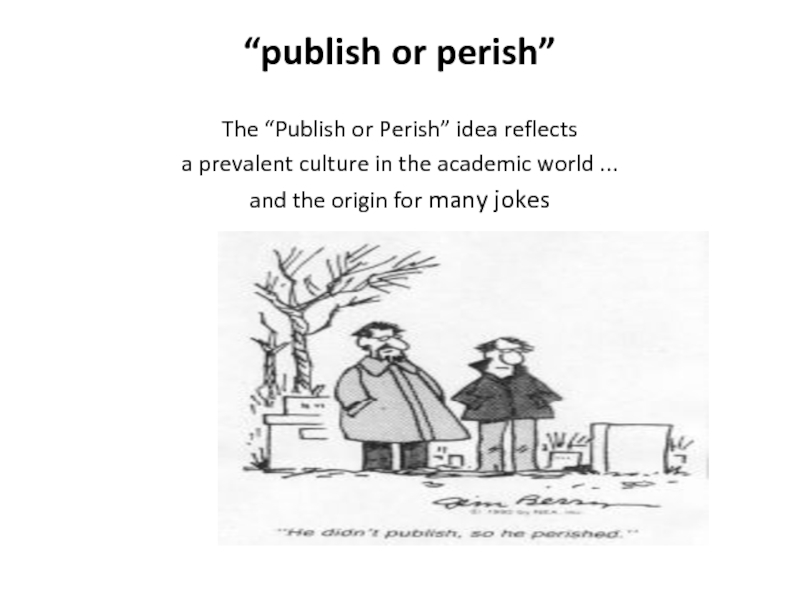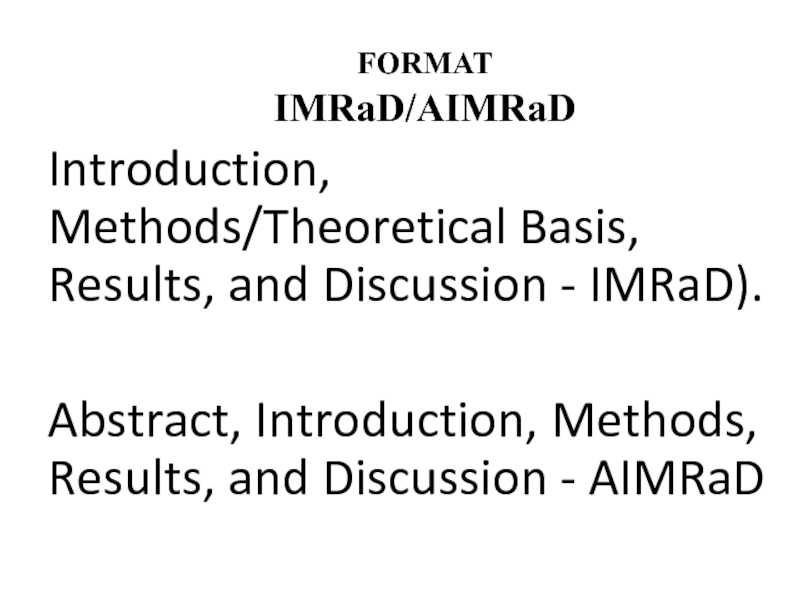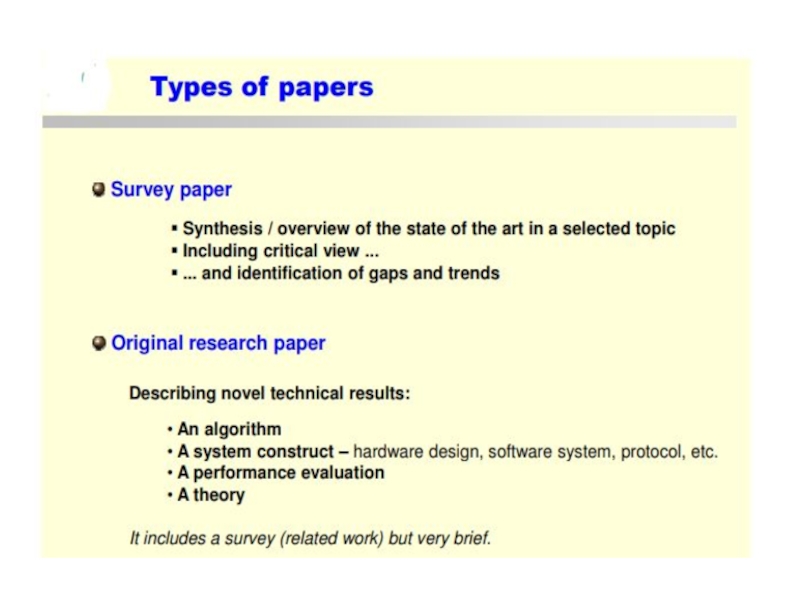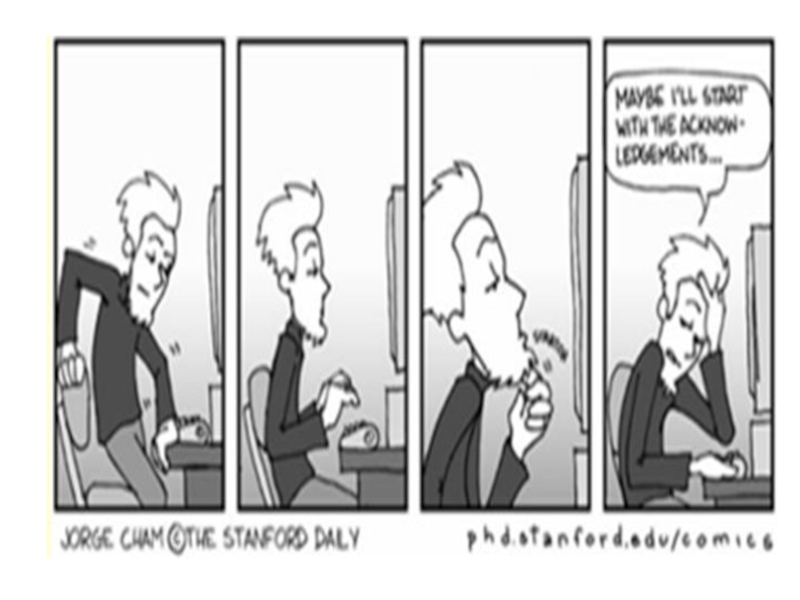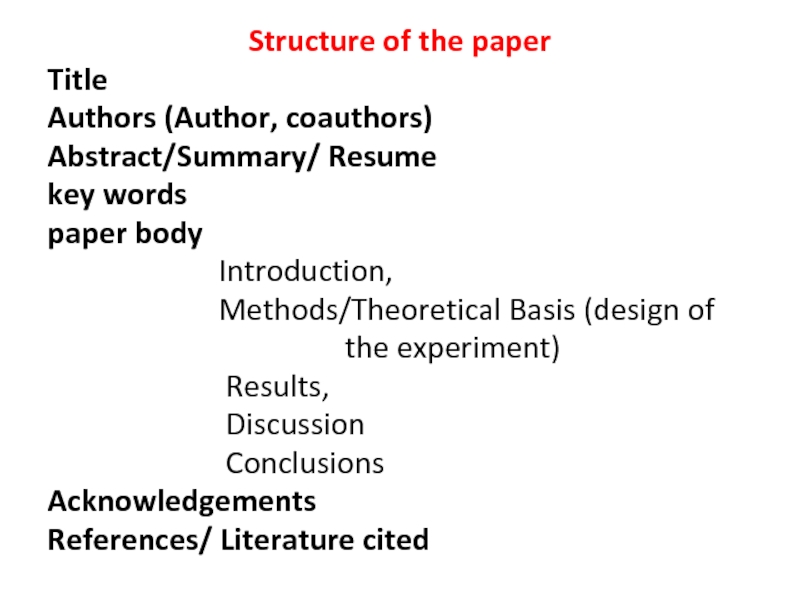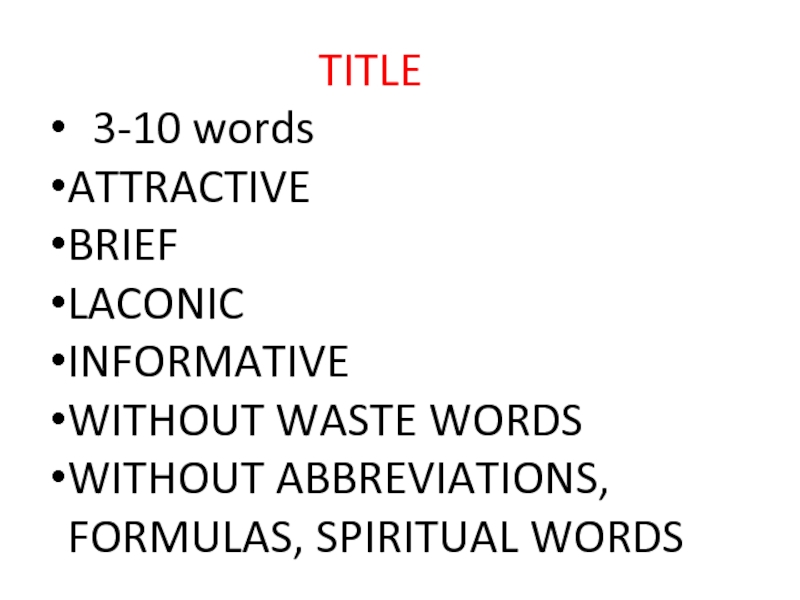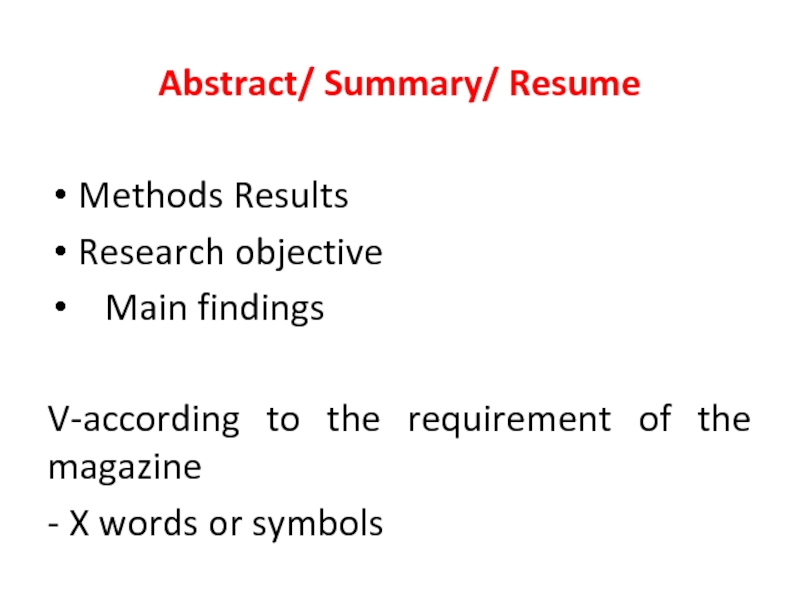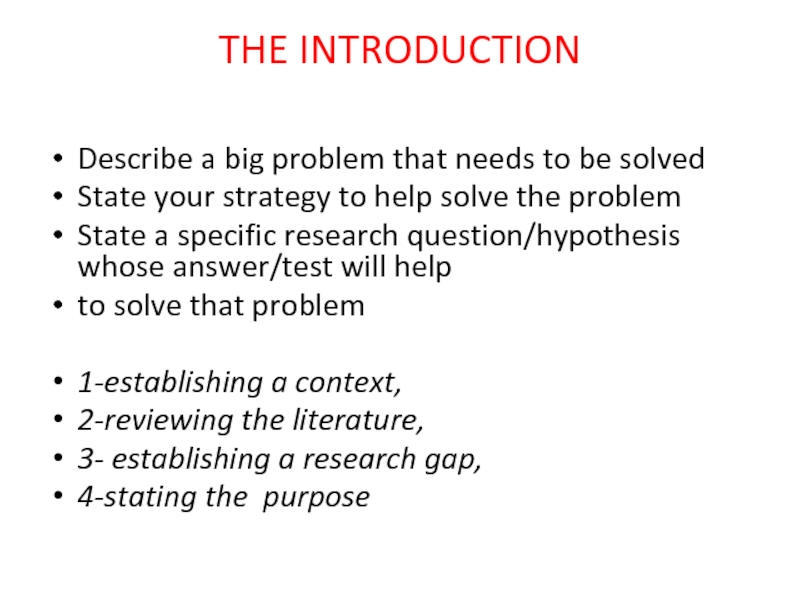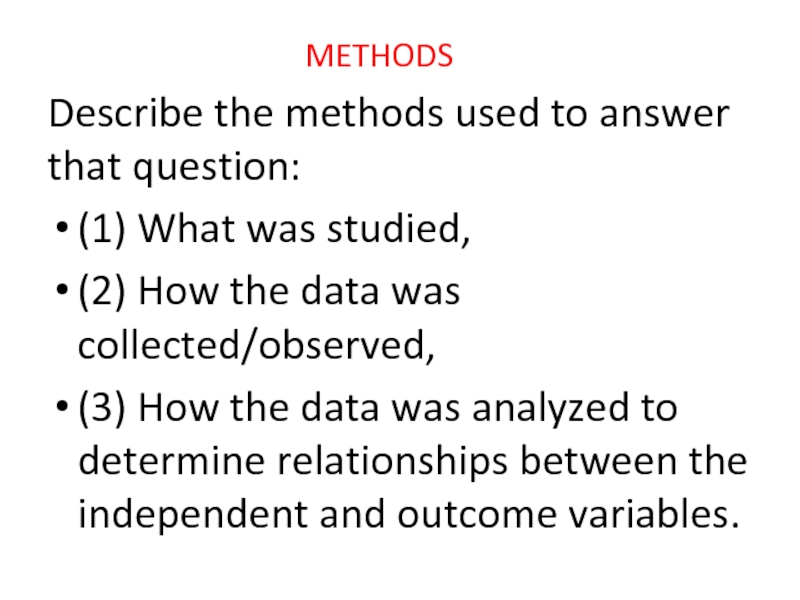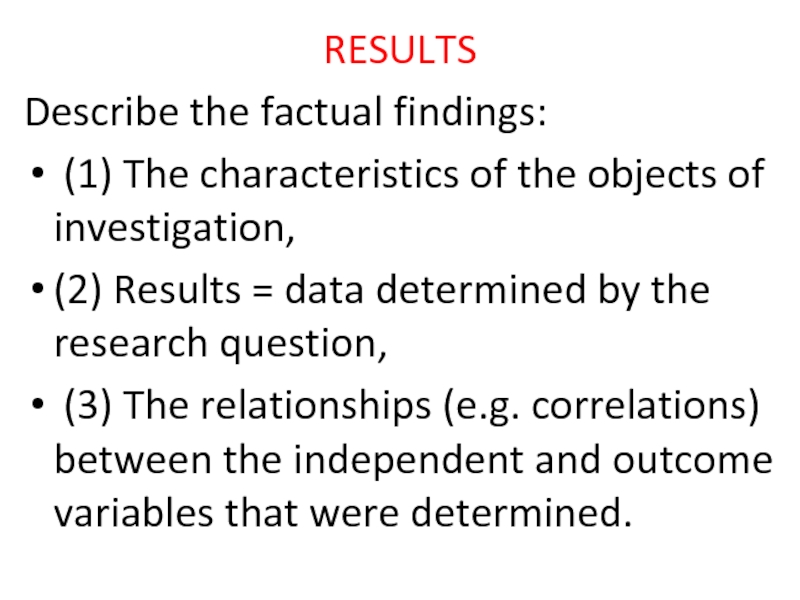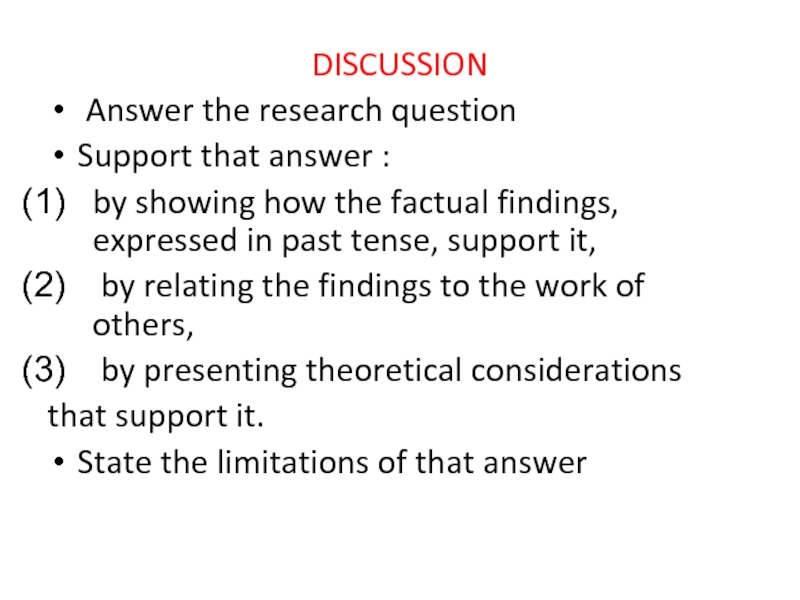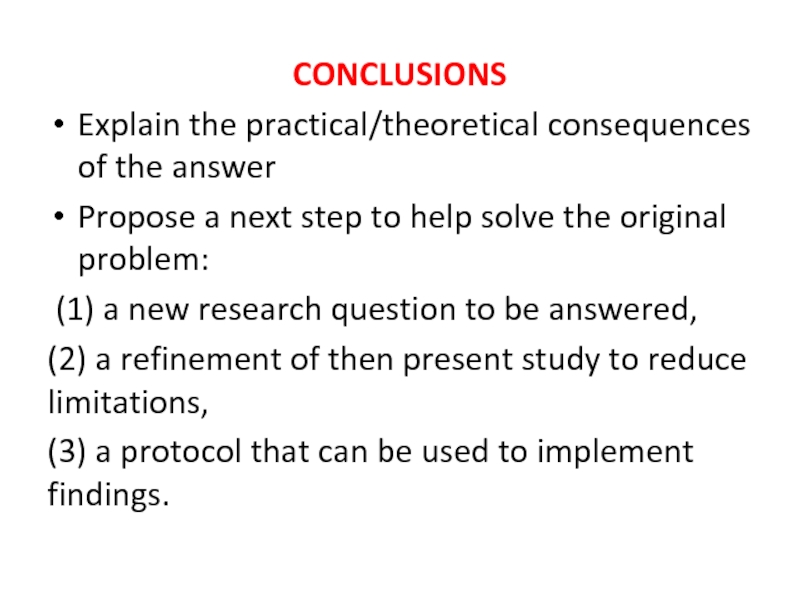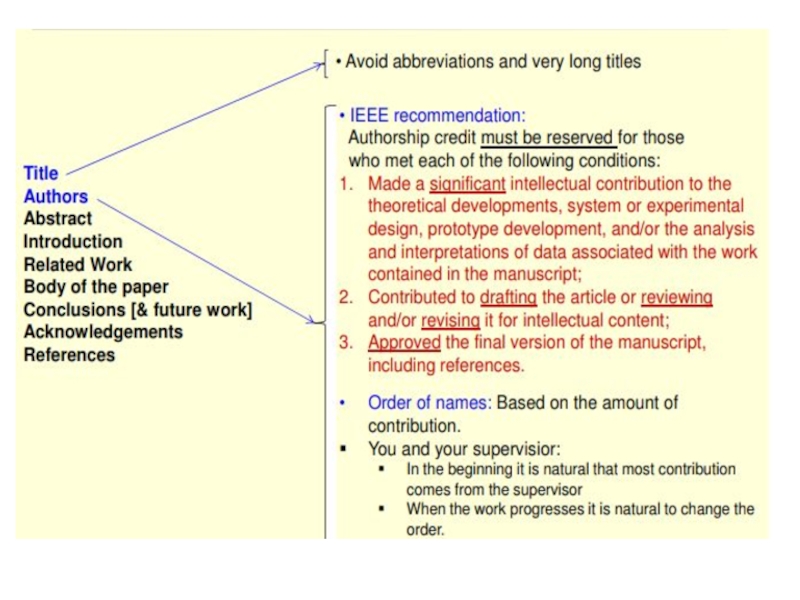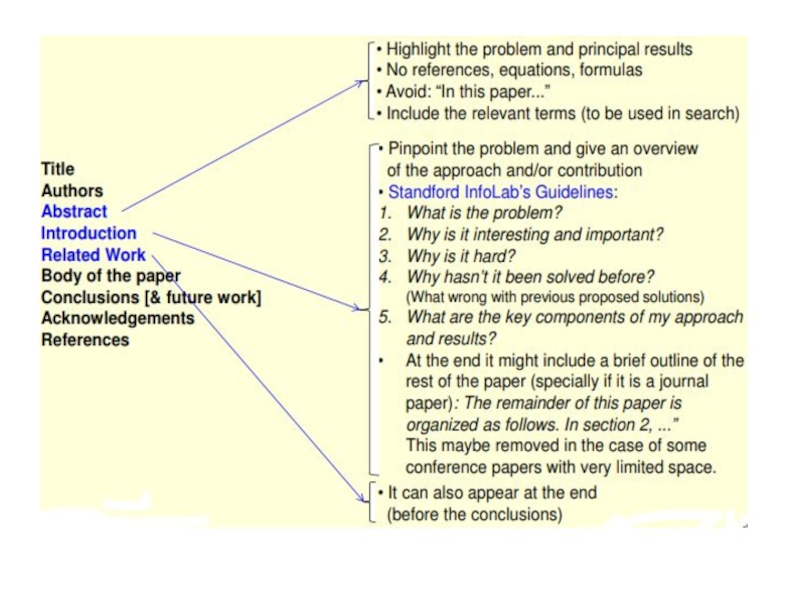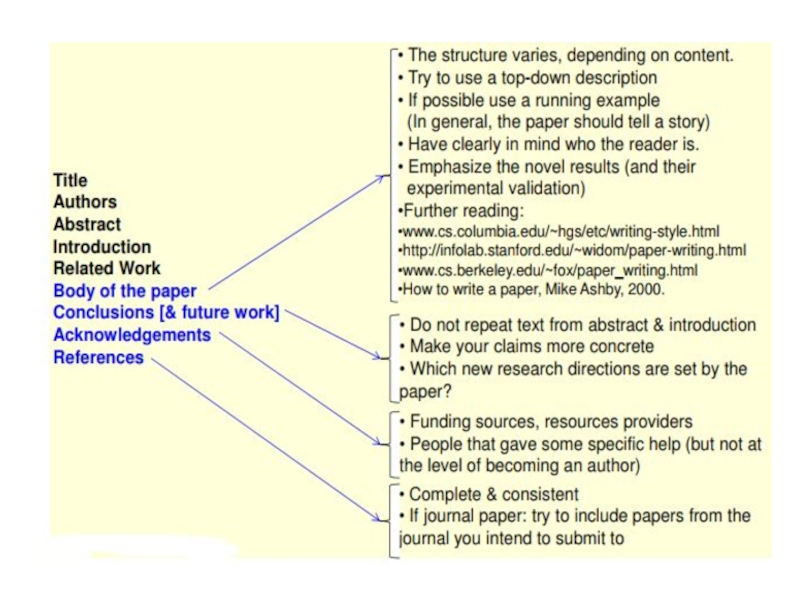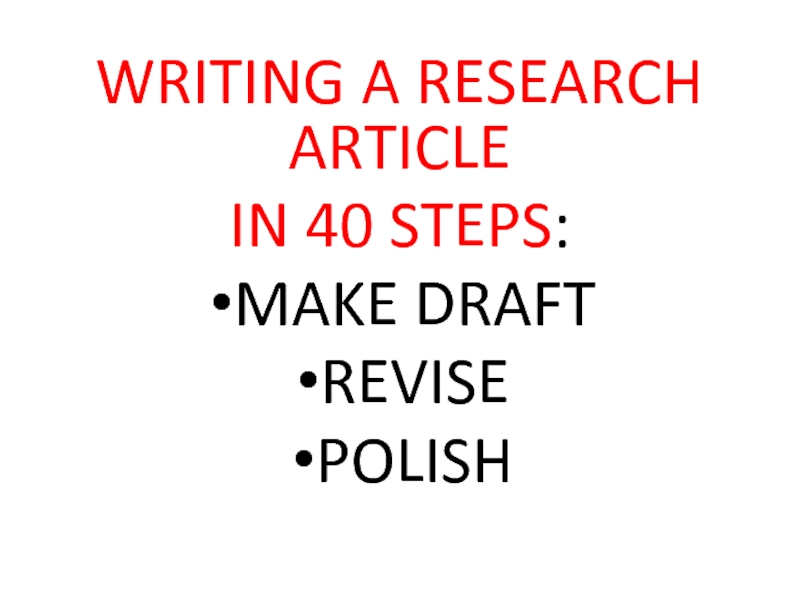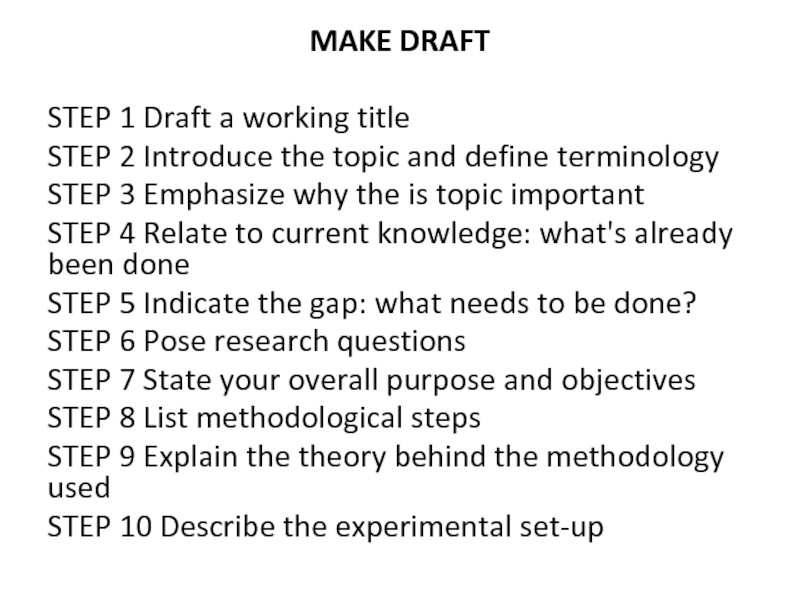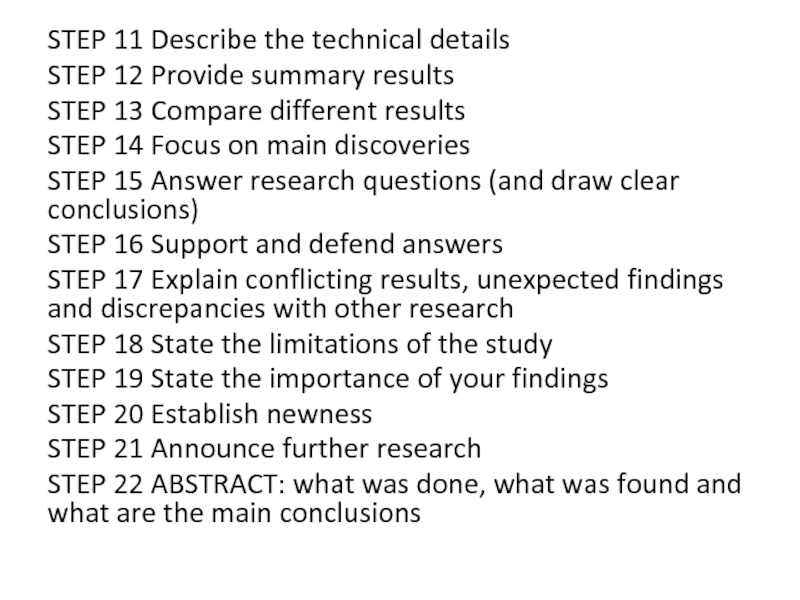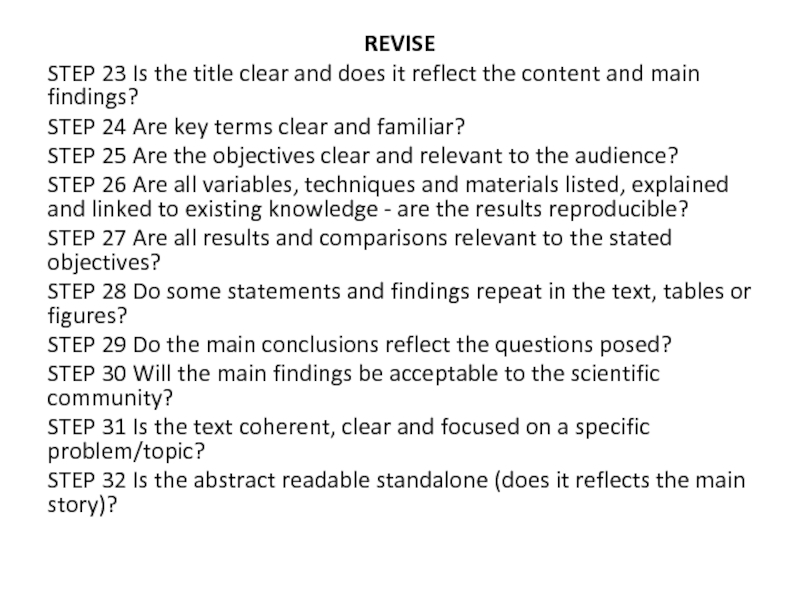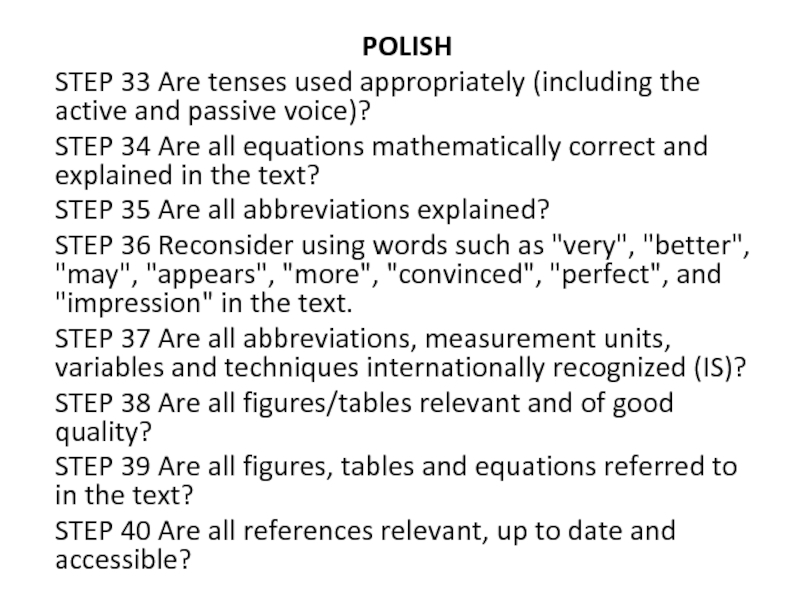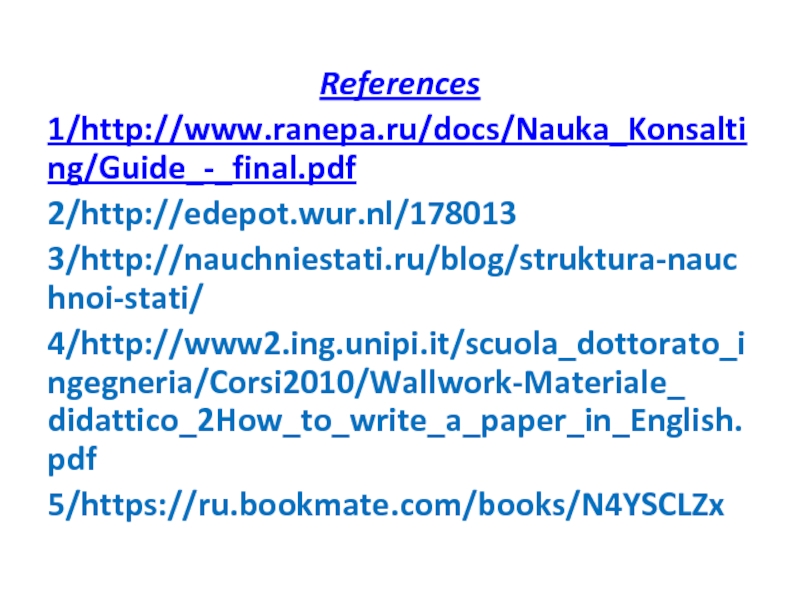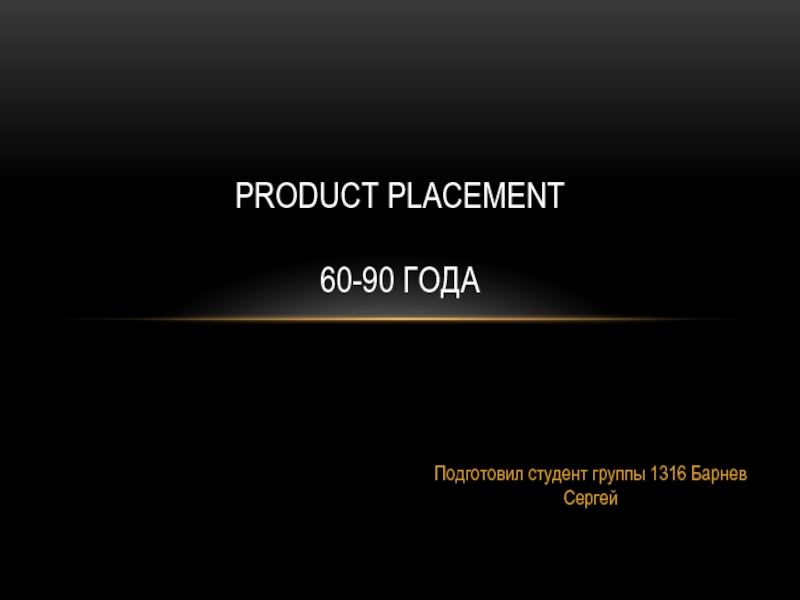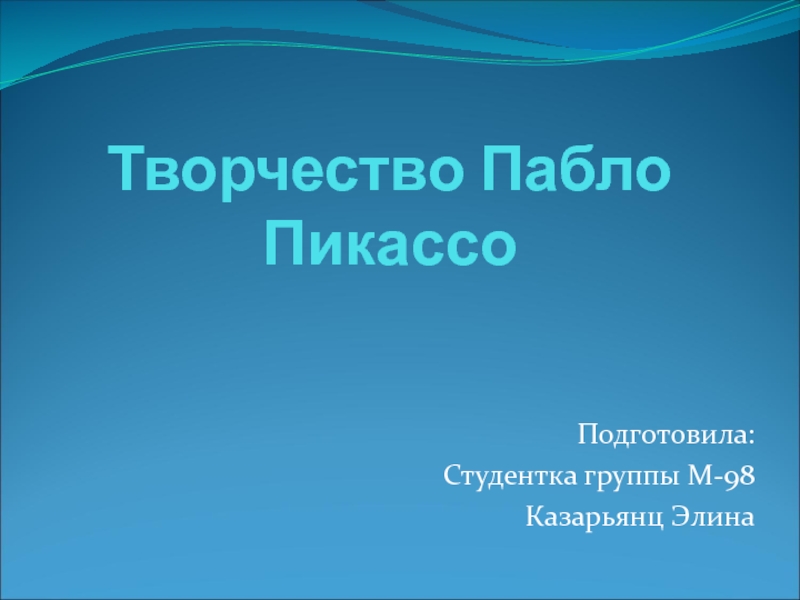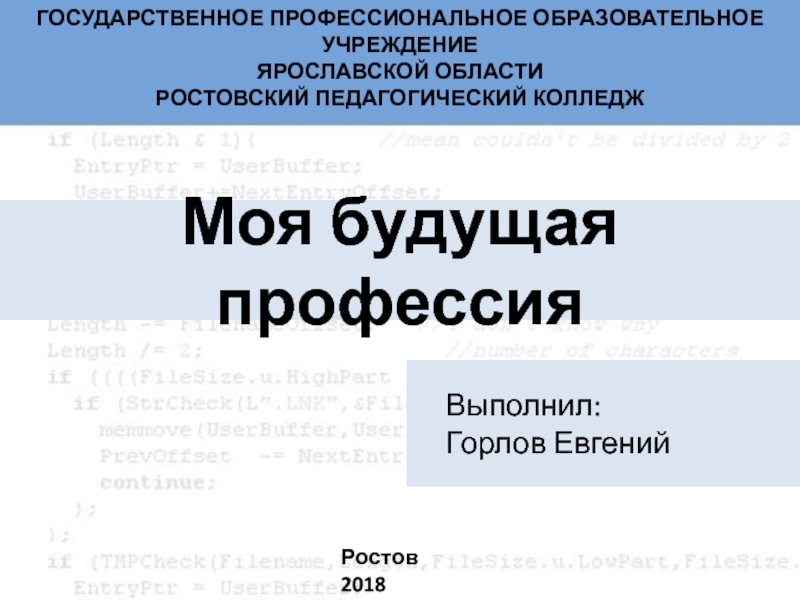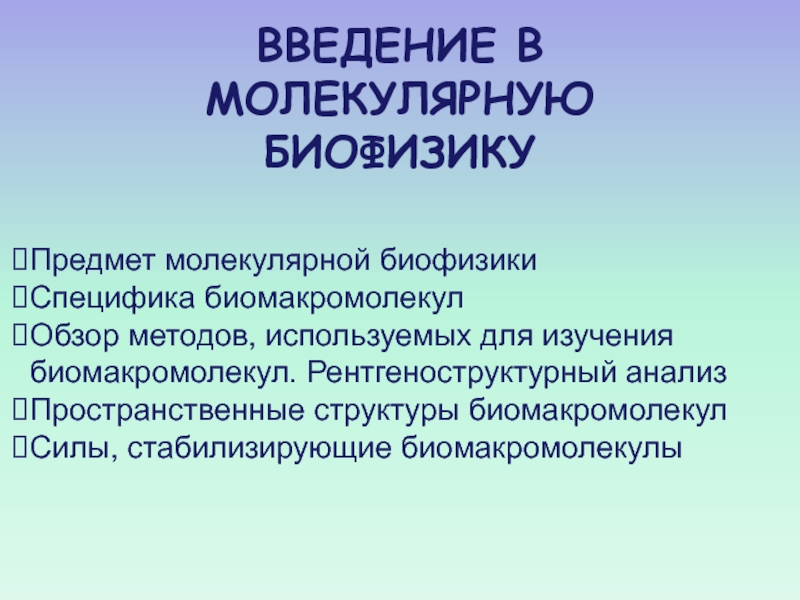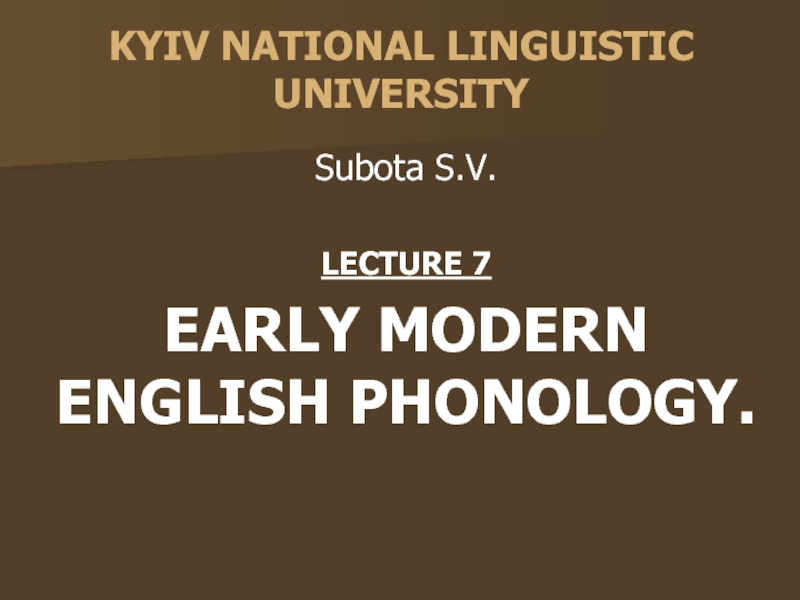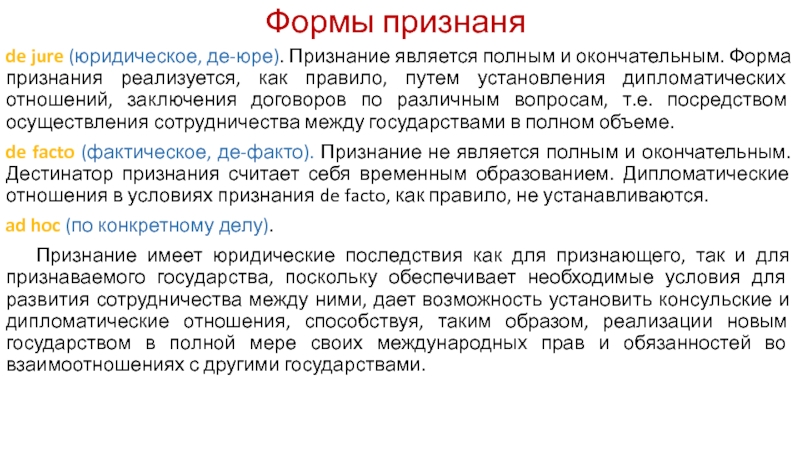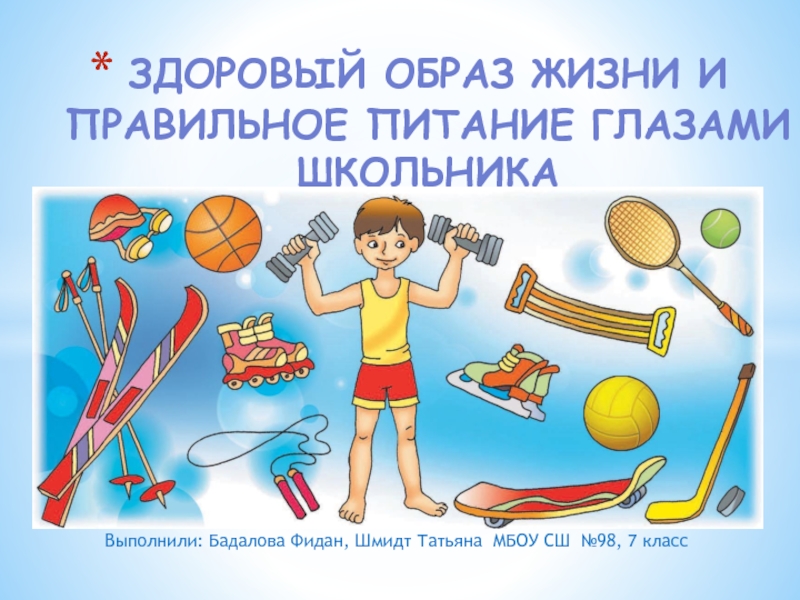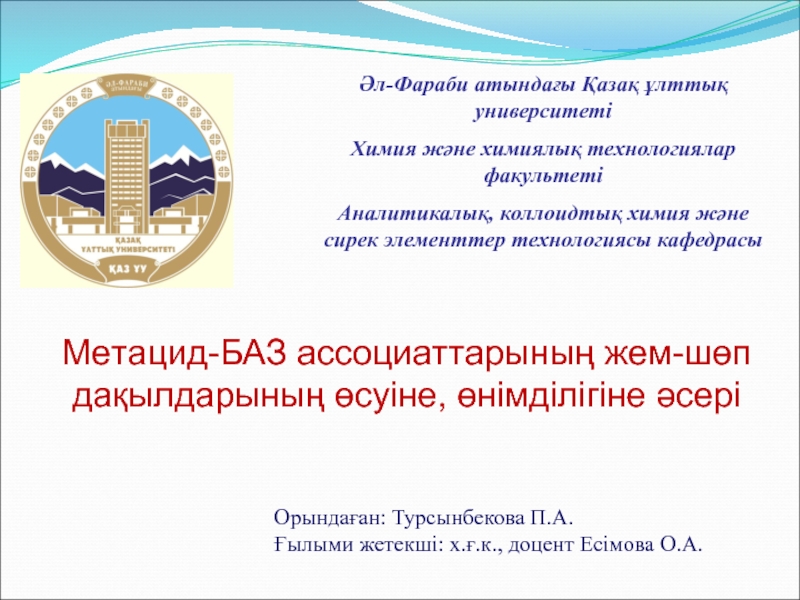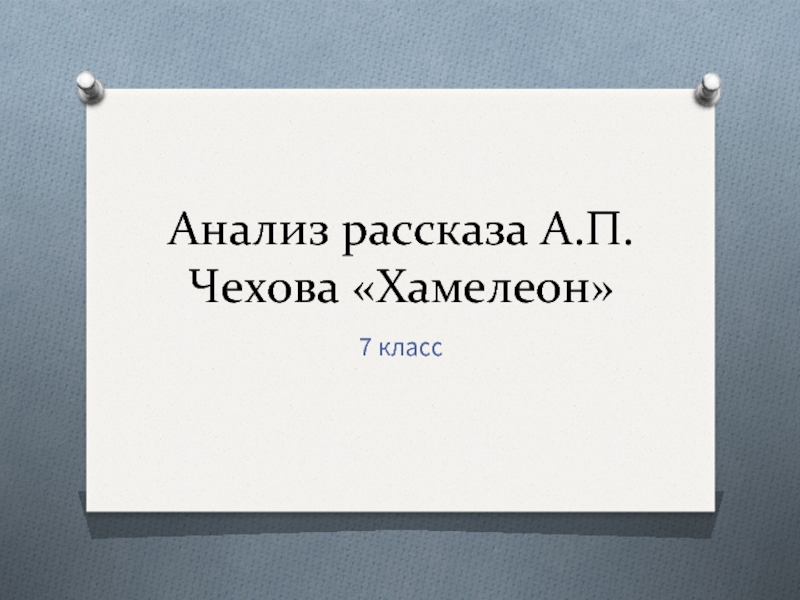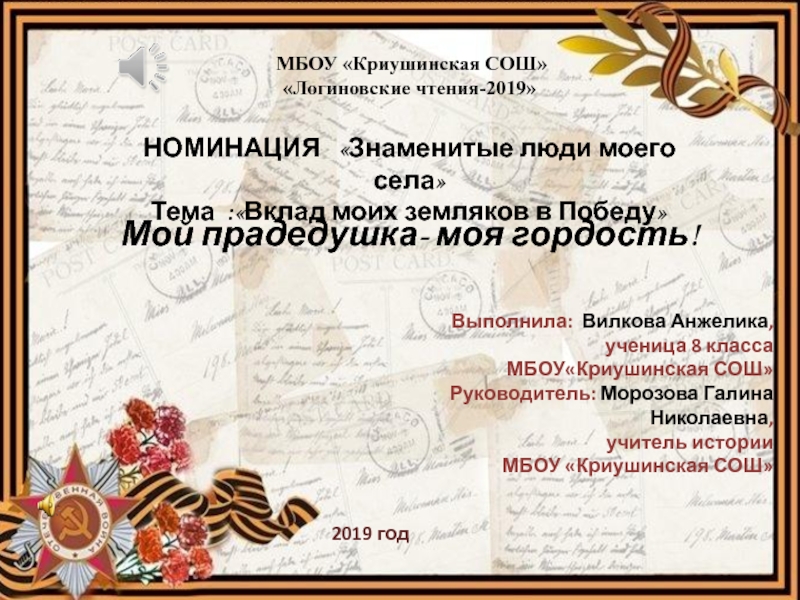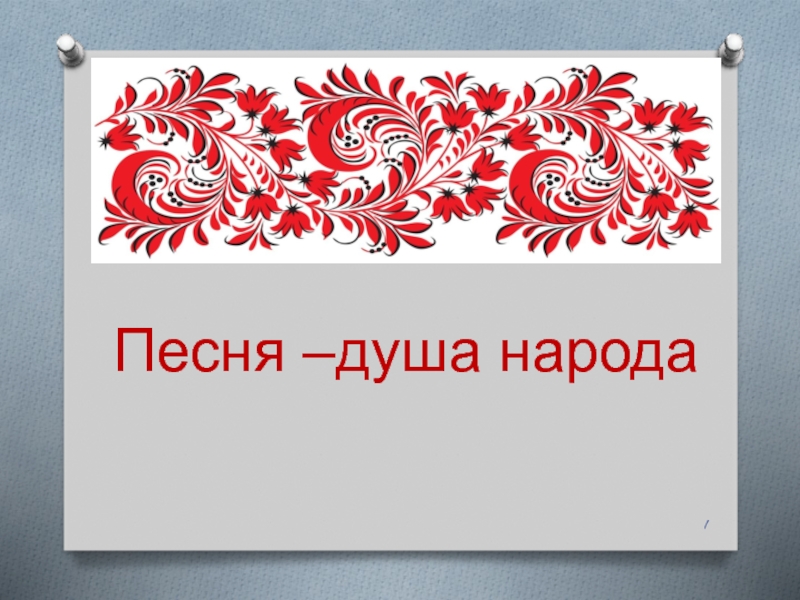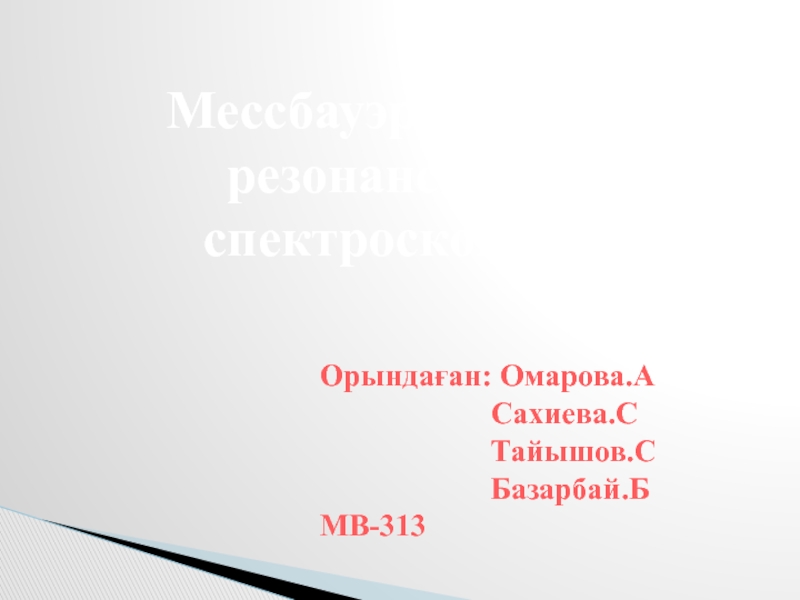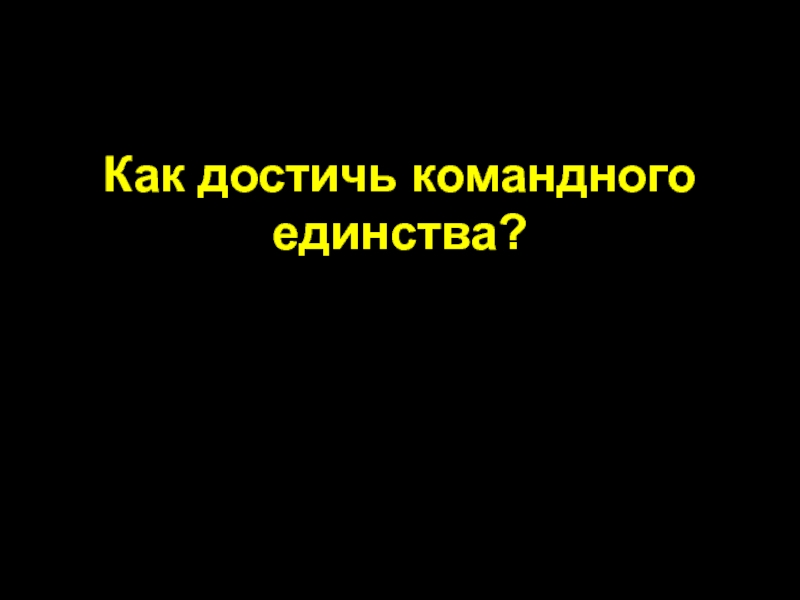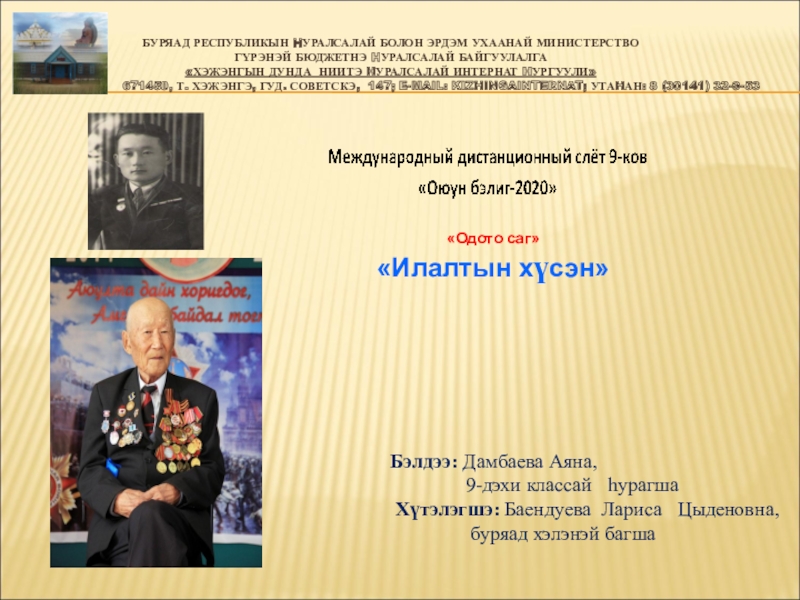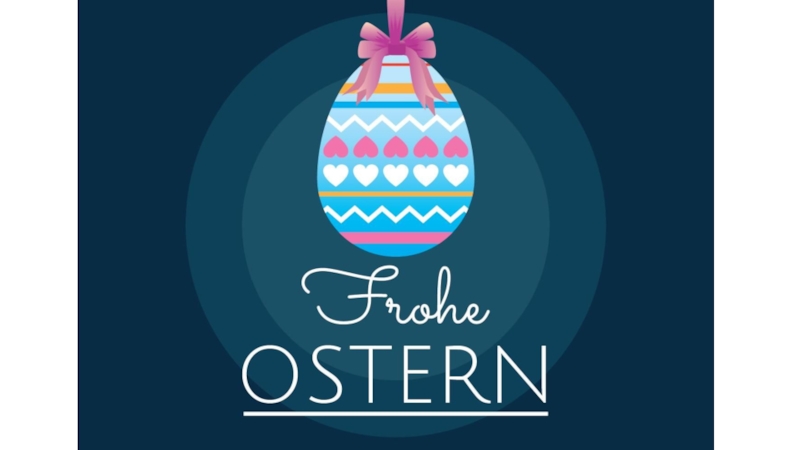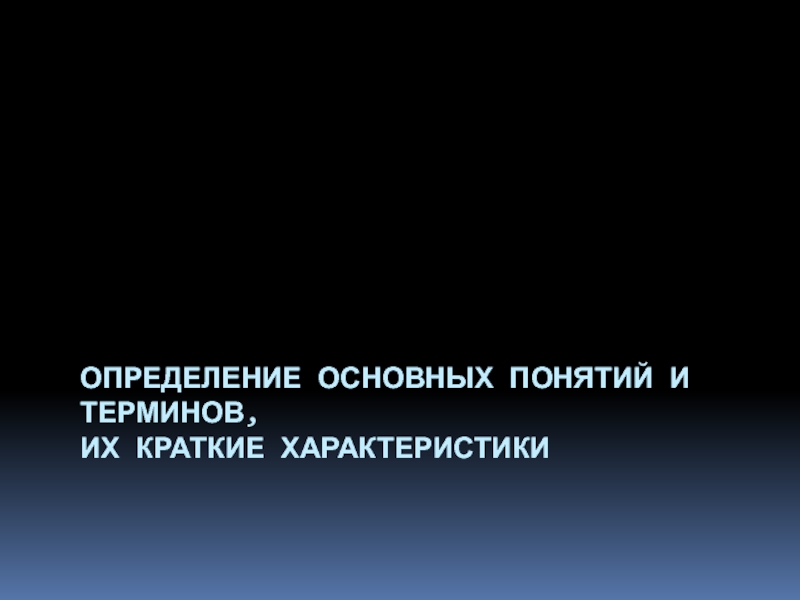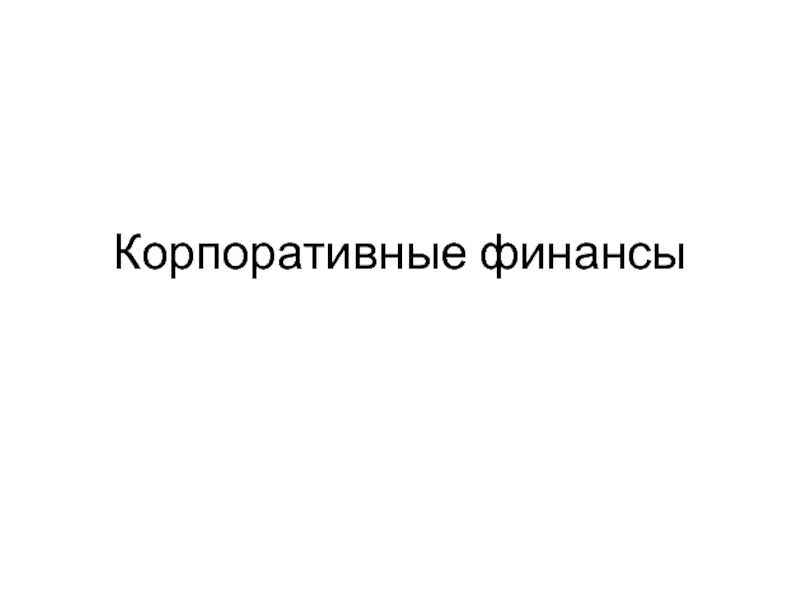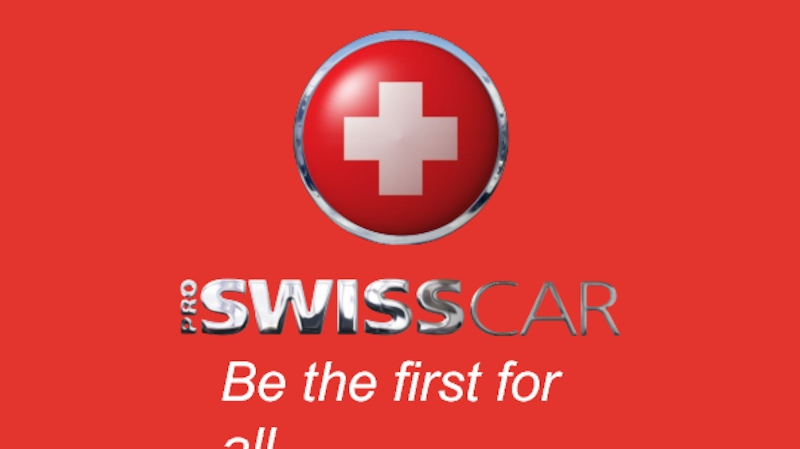Разделы презентаций
- Разное
- Английский язык
- Астрономия
- Алгебра
- Биология
- География
- Геометрия
- Детские презентации
- Информатика
- История
- Литература
- Математика
- Медицина
- Менеджмент
- Музыка
- МХК
- Немецкий язык
- ОБЖ
- Обществознание
- Окружающий мир
- Педагогика
- Русский язык
- Технология
- Физика
- Философия
- Химия
- Шаблоны, картинки для презентаций
- Экология
- Экономика
- Юриспруденция
WRITING SCIENTIFIC PAPERS / research articles
Содержание
- 1. WRITING SCIENTIFIC PAPERS / research articles
- 2. PLANFORMAT IMRaD/AIMRaDSTRUCTURE OF THE PAPER40 STEPS FOR WRITING A RESEARCH ARTICLE
- 3. “publish or perish”The “Publish or Perish” idea
- 4. Introduction, Methods/Theoretical Basis, Results, and Discussion -
- 5. Слайд 5
- 6. Title
- 7. Structure of the paperTitle Authors (Author, coauthors)
- 8. Слайд 8
- 9. Abstract/ Summary/ Resume Methods ResultsResearch objective
- 10. THE INTRODUCTION Describe a big problem that
- 11. Слайд 11
- 12. RESULTS Describe the factual findings: (1) The
- 13. DISCUSSION Answer the research questionSupport that answer
- 14. CONCLUSIONSExplain the practical/theoretical consequences of the answerPropose
- 15. Слайд 15
- 16. Слайд 16
- 17. Слайд 17
- 18. WRITING A RESEARCH ARTICLE IN 40 STEPS:MAKE DRAFTREVISEPOLISH
- 19. MAKE DRAFTSTEP 1 Draft a working titleSTEP
- 20. STEP 11 Describe the technical detailsSTEP 12
- 21. REVISE STEP 23 Is the title clear
- 22. POLISH STEP 33 Are tenses used appropriately
- 23. References1/http://www.ranepa.ru/docs/Nauka_Konsalting/Guide_-_final.pdf2/http://edepot.wur.nl/1780133/http://nauchniestati.ru/blog/struktura-nauchnoi-stati/4/http://www2.ing.unipi.it/scuola_dottorato_ingegneria/Corsi2010/Wallwork-Materiale_ didattico_2How_to_write_a_paper_in_English.pdf5/https://ru.bookmate.com/books/N4YSCLZx
- 24. Слайд 24
- 25. Скачать презентанцию
PLANFORMAT IMRaD/AIMRaDSTRUCTURE OF THE PAPER40 STEPS FOR WRITING A RESEARCH ARTICLE
Слайды и текст этой презентации
Слайд 3“publish or perish”
The “Publish or Perish” idea reflects
a prevalent
culture in the academic world ...
and the origin for
many jokesСлайд 4Introduction, Methods/Theoretical Basis, Results, and Discussion - IMRaD).
Abstract, Introduction,
Methods, Results, and Discussion - AIMRaD
FORMAT
IMRaD/AIMRaD
Слайд 7Structure of the paper
Title
Authors (Author, coauthors)
Abstract/Summary/ Resume
key
words
paper body
Introduction, Methods/Theoretical Basis (design of
the experiment)
Results,
Discussion
Conclusions
Acknowledgements
References/ Literature cited
Слайд 8
TITLE
3-10 words
ATTRACTIVE
BRIEF
LACONIC
INFORMATIVE
WITHOUT WASTE WORDS
WITHOUT ABBREVIATIONS, FORMULAS, SPIRITUAL
WORDSСлайд 9Abstract/ Summary/ Resume
Methods Results
Research objective
Main findings
V-according to
the requirement of the magazine
- X words or symbols
Слайд 10THE INTRODUCTION
Describe a big problem that needs to be solved
State
your strategy to help solve the problem
State a specific research
question/hypothesis whose answer/test will helpto solve that problem
1-establishing a context,
2-reviewing the literature,
3- establishing a research gap,
4-stating the purpose
Слайд 11
METHODS
Describe the methods used
to answer that question:(1) What was studied,
(2) How the data was collected/observed,
(3) How the data was analyzed to determine relationships between the independent and outcome variables.
Слайд 12RESULTS
Describe the factual findings:
(1) The characteristics of the objects
of investigation,
(2) Results = data determined by the research
question,(3) The relationships (e.g. correlations) between the independent and outcome variables that were determined.
Слайд 13DISCUSSION
Answer the research question
Support that answer :
by showing
how the factual findings, expressed in past tense, support it,
by relating the findings to the work of others,
by presenting theoretical considerations
that support it.
State the limitations of that answer
Слайд 14CONCLUSIONS
Explain the practical/theoretical consequences of the answer
Propose a next step
to help solve the original problem:
(1) a new research
question to be answered, (2) a refinement of then present study to reduce limitations,
(3) a protocol that can be used to implement findings.
Слайд 19MAKE DRAFT
STEP 1 Draft a working title
STEP 2 Introduce the
topic and define terminology
STEP 3 Emphasize why the is topic
importantSTEP 4 Relate to current knowledge: what's already been done
STEP 5 Indicate the gap: what needs to be done?
STEP 6 Pose research questions
STEP 7 State your overall purpose and objectives
STEP 8 List methodological steps
STEP 9 Explain the theory behind the methodology used
STEP 10 Describe the experimental set-up
Слайд 20STEP 11 Describe the technical details
STEP 12 Provide summary results
STEP
13 Compare different results
STEP 14 Focus on main discoveries
STEP 15
Answer research questions (and draw clear conclusions)STEP 16 Support and defend answers
STEP 17 Explain conflicting results, unexpected findings and discrepancies with other research
STEP 18 State the limitations of the study
STEP 19 State the importance of your findings
STEP 20 Establish newness
STEP 21 Announce further research
STEP 22 ABSTRACT: what was done, what was found and what are the main conclusions
Слайд 21REVISE
STEP 23 Is the title clear and does it
reflect the content and main findings?
STEP 24 Are key terms
clear and familiar?STEP 25 Are the objectives clear and relevant to the audience?
STEP 26 Are all variables, techniques and materials listed, explained and linked to existing knowledge - are the results reproducible?
STEP 27 Are all results and comparisons relevant to the stated objectives?
STEP 28 Do some statements and findings repeat in the text, tables or figures?
STEP 29 Do the main conclusions reflect the questions posed?
STEP 30 Will the main findings be acceptable to the scientific community?
STEP 31 Is the text coherent, clear and focused on a specific problem/topic?
STEP 32 Is the abstract readable standalone (does it reflects the main story)?
Слайд 22POLISH
STEP 33 Are tenses used appropriately (including the active
and passive voice)?
STEP 34 Are all equations mathematically correct and
explained in the text?STEP 35 Are all abbreviations explained?
STEP 36 Reconsider using words such as "very", "better", "may", "appears", "more", "convinced", "perfect", and "impression" in the text.
STEP 37 Are all abbreviations, measurement units, variables and techniques internationally recognized (IS)?
STEP 38 Are all figures/tables relevant and of good quality?
STEP 39 Are all figures, tables and equations referred to in the text?
STEP 40 Are all references relevant, up to date and accessible?
